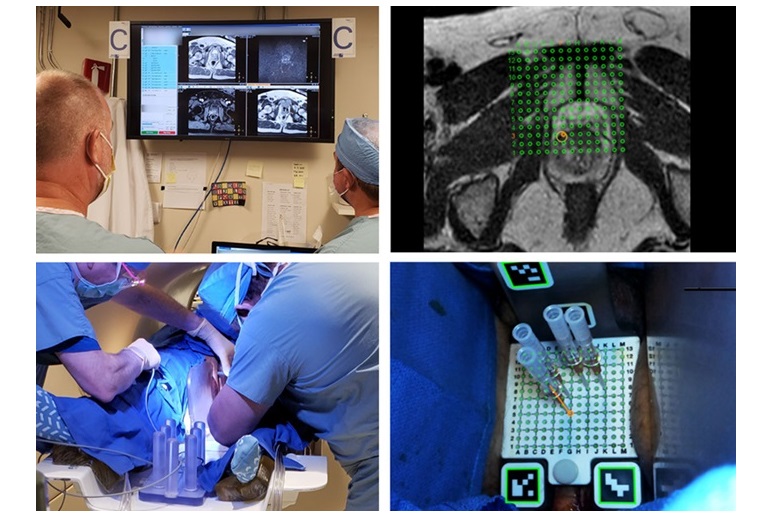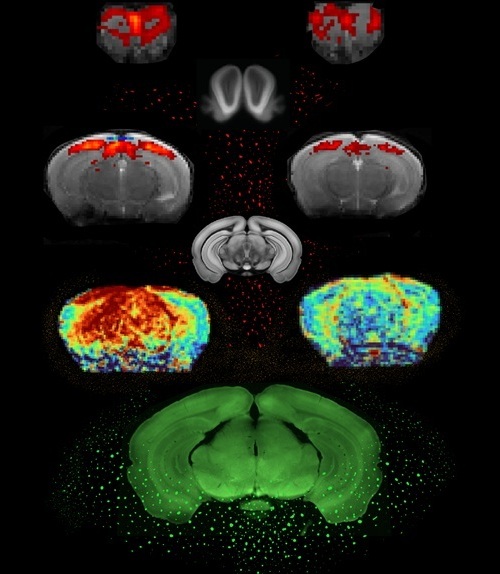Wearable Ultrasound Navigation System Could Improve Lumbar Puncture Accuracy
|
By MedImaging International staff writers Posted on 26 Sep 2024 |

A lumbar puncture, or spinal tap, is a common medical procedure in which a hollow needle is inserted into the spinal canal to access cerebrospinal fluid that surrounds the brain and spinal cord. It is used to diagnose serious neurological conditions like meningitis or encephalitis and to administer anesthetics or chemotherapy. Physicians often refer to lumbar punctures as “blind bedside procedures” because they rely on feeling for the gap between two lumbar bones and then attempting to insert the needle in the correct location. This process can be particularly challenging in overweight or elderly patients. In some cases, the bony landmarks that guide the needle may not be easily felt, and in elderly patients, spinal degeneration adds to the difficulty. Multiple failed attempts can cause pain and increase the risk of blood contamination in the cerebrospinal fluid, potentially impacting the accuracy of diagnostic tests for conditions like meningitis, encephalitis, or subarachnoid hemorrhage. Now, researchers have developed an innovative ultrasound navigation system designed to provide accurate, real-time guidance for needle insertion during lumbar punctures.
The system, created by a team from Johns Hopkins University (Baltimore, MD, USA) and Clear Guide Medical (Baltimore, MD, USA), incorporates three key components to enhance needle accuracy: a cell phone-sized ultrasound scanner that can be attached to the patient’s skin along the lower spine, imaging algorithms that estimate bone surfaces, and an augmented reality display that superimposes a digital guide for needle insertion onto the view of the patient’s spine. This research builds on earlier findings, which demonstrated that the ultrasound scanner significantly improved visibility of the lumbar gap.
Published in IEEE Transactions on Medical Robotics and Bionics, the current study evaluated the overall accuracy of the navigation system, comparing two augmented reality methods: one using a tablet with camera-based tracking and the other using a head-mounted display similar to goggles, with optical-based tracking. Both approaches successfully guided needle placement, with an accuracy of 2.83 mm for the tablet and 2.76 mm for the head-mounted display, both within the 4 mm benchmark commonly used in spinal surgeries for needle placement precision.
The researchers also conducted a preliminary user study to gather feedback and compare the two augmented reality systems. Sixteen users completed eight sets of lumbar punctures using a realistic anatomical model (phantom) of the spine. The success rate for first-time needle insertions was 89%. On average, users required 1.14 attempts with the head-mounted display and 1.12 attempts with the tablet system to reach the target, defined as a rubber tube embedded in the phantom vertebrae canal. In comparison, other studies have shown that traditional methods using palpation often require multiple attempts. One study found that first-time needle insertion was successful in 71% of patients, while nearly 30% needed multiple attempts or failed entirely. Since completing this study, the researchers have replaced their needle tracking method using QR and other codes with artificial intelligence, simplifying the system for clinical use.
“This wearable ultrasound navigation system has several advantages over other imaging navigation methods,” said Peter Kazanzides, Ph.D., a research professor in computer science at Johns Hopkins University. “A pre-operative computed tomography scan would not be necessary, and clinicians would be able to use both hands to control the needle when using the navigation system. They currently use one hand to hold and guide the imaging probe and the other hand to insert the needle.”
“Our team at Hopkins is very excited about the direction we’re taking toward wearable ultrasound devices. Our device can capture the complex shape of lumbar bones without the shadows often seen in typical ultrasound scanners and it has the flexibility to adapt to motion,” added Emad Boctor, Ph.D., associate research professor at Johns Hopkins University and co-founder of Clear Guide Medical.
Related Links:
Johns Hopkins University
Clear Guide Medical
Latest Ultrasound News
- New Incision-Free Technique Halts Growth of Debilitating Brain Lesions
- AI-Powered Lung Ultrasound Outperforms Human Experts in Tuberculosis Diagnosis
- AI Identifies Heart Valve Disease from Common Imaging Test
- Novel Imaging Method Enables Early Diagnosis and Treatment Monitoring of Type 2 Diabetes
- Ultrasound-Based Microscopy Technique to Help Diagnose Small Vessel Diseases
- Smart Ultrasound-Activated Immune Cells Destroy Cancer Cells for Extended Periods
- Tiny Magnetic Robot Takes 3D Scans from Deep Within Body
- High Resolution Ultrasound Speeds Up Prostate Cancer Diagnosis
- World's First Wireless, Handheld, Whole-Body Ultrasound with Single PZT Transducer Makes Imaging More Accessible
- Artificial Intelligence Detects Undiagnosed Liver Disease from Echocardiograms
- Ultrasound Imaging Non-Invasively Tracks Tumor Response to Radiation and Immunotherapy
- AI Improves Detection of Congenital Heart Defects on Routine Prenatal Ultrasounds
- AI Diagnoses Lung Diseases from Ultrasound Videos with 96.57% Accuracy
- New Contrast Agent for Ultrasound Imaging Ensures Affordable and Safer Medical Diagnostics
- Ultrasound-Directed Microbubbles Boost Immune Response Against Tumors
- POC Ultrasound Enhances Early Pregnancy Care and Cuts Emergency Visits
Channels
Radiography
view channel
Machine Learning Algorithm Identifies Cardiovascular Risk from Routine Bone Density Scans
A new study published in the Journal of Bone and Mineral Research reveals that an automated machine learning program can predict the risk of cardiovascular events and falls or fractures by analyzing bone... Read more
AI Improves Early Detection of Interval Breast Cancers
Interval breast cancers, which occur between routine screenings, are easier to treat when detected earlier. Early detection can reduce the need for aggressive treatments and improve the chances of better outcomes.... Read more
World's Largest Class Single Crystal Diamond Radiation Detector Opens New Possibilities for Diagnostic Imaging
Diamonds possess ideal physical properties for radiation detection, such as exceptional thermal and chemical stability along with a quick response time. Made of carbon with an atomic number of six, diamonds... Read moreMRI
view channel
Simple Brain Scan Diagnoses Parkinson's Disease Years Before It Becomes Untreatable
Parkinson's disease (PD) remains a challenging condition to treat, with no known cure. Though therapies have improved over time, and ongoing research focuses on methods to slow or alter the disease’s progression,... Read more
Cutting-Edge MRI Technology to Revolutionize Diagnosis of Common Heart Problem
Aortic stenosis is a common and potentially life-threatening heart condition. It occurs when the aortic valve, which regulates blood flow from the heart to the rest of the body, becomes stiff and narrow.... Read moreNuclear Medicine
view channel
New Imaging Approach Could Reduce Need for Biopsies to Monitor Prostate Cancer
Prostate cancer is the second leading cause of cancer-related death among men in the United States. However, the majority of older men diagnosed with prostate cancer have slow-growing, low-risk forms of... Read more
Novel Radiolabeled Antibody Improves Diagnosis and Treatment of Solid Tumors
Interleukin-13 receptor α-2 (IL13Rα2) is a cell surface receptor commonly found in solid tumors such as glioblastoma, melanoma, and breast cancer. It is minimally expressed in normal tissues, making it... Read moreGeneral/Advanced Imaging
view channel
First-Of-Its-Kind Wearable Device Offers Revolutionary Alternative to CT Scans
Currently, patients with conditions such as heart failure, pneumonia, or respiratory distress often require multiple imaging procedures that are intermittent, disruptive, and involve high levels of radiation.... Read more
AI-Based CT Scan Analysis Predicts Early-Stage Kidney Damage Due to Cancer Treatments
Radioligand therapy, a form of targeted nuclear medicine, has recently gained attention for its potential in treating specific types of tumors. However, one of the potential side effects of this therapy... Read moreImaging IT
view channel
New Google Cloud Medical Imaging Suite Makes Imaging Healthcare Data More Accessible
Medical imaging is a critical tool used to diagnose patients, and there are billions of medical images scanned globally each year. Imaging data accounts for about 90% of all healthcare data1 and, until... Read more
Global AI in Medical Diagnostics Market to Be Driven by Demand for Image Recognition in Radiology
The global artificial intelligence (AI) in medical diagnostics market is expanding with early disease detection being one of its key applications and image recognition becoming a compelling consumer proposition... Read moreIndustry News
view channel
GE HealthCare and NVIDIA Collaboration to Reimagine Diagnostic Imaging
GE HealthCare (Chicago, IL, USA) has entered into a collaboration with NVIDIA (Santa Clara, CA, USA), expanding the existing relationship between the two companies to focus on pioneering innovation in... Read more
Patient-Specific 3D-Printed Phantoms Transform CT Imaging
New research has highlighted how anatomically precise, patient-specific 3D-printed phantoms are proving to be scalable, cost-effective, and efficient tools in the development of new CT scan algorithms... Read more
Siemens and Sectra Collaborate on Enhancing Radiology Workflows
Siemens Healthineers (Forchheim, Germany) and Sectra (Linköping, Sweden) have entered into a collaboration aimed at enhancing radiologists' diagnostic capabilities and, in turn, improving patient care... Read more




















